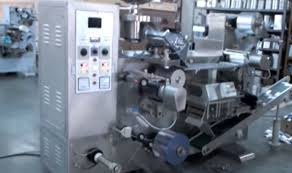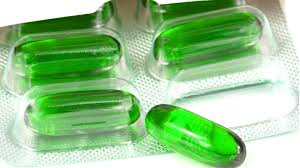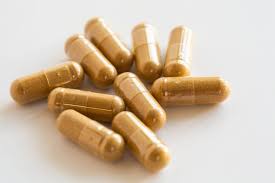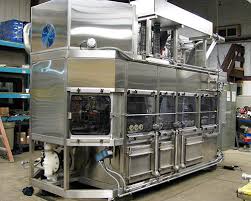|
Getting your Trinity Audio player ready... |
How to Calculate Blister Machine Foil Requirements: A Comprehensive Guide
Blister Machine Foil: In pharmaceutical packaging, particularly for products like tablets and capsules, the use of aluminum and PVC/PVDC foil is essential. These foils are used in blister packaging, which serves to protect the medication from environmental factors such as moisture, light, and contamination. However, accurately determining the required amount of foil for a specific batch can be challenging. This task is especially important for professionals working in pharmaceutical manufacturing, as the right amount of foil ensures efficiency and minimizes waste.
Understanding how to calculate the exact quantity of foil for a blister packaging lot involves two primary approaches: the theoretical method and the practical method. While both methods can yield similar results, each has its own advantages and limitations. This article delves into both methods, providing detailed steps and examples to guide you through the process of calculating foil requirements for a given batch.
The Challenge of Accurate Foil Calculation Blister Machine Foil
A key question for anyone involved in blister packaging is: How much printed aluminum foil and base foil are required for a specific batch or lot? This calculation is critical because the incorrect amount of foil can lead to excess waste or shortages, both of which affect the overall production process.
Theoretical Method: Blister Machine Foil
The theoretical method is a great starting point for estimating the foil requirements of a new product, even when there is no existing blister tooling. This method allows professionals to determine the foil needed based on the dimensions of the blister, which can be derived from a blister drawing. By knowing the length, width, and any other relevant dimensions, we can calculate the total area of foil required for a batch of blisters.
Example Calculation:
Here’s the calculation presented in a table format to make it easier to follow:
Step | Details | Value |
1. Number of Blisters | Tablets per blister = 10,000 / 10 | 1,000 blisters |
2. Area of Foil per Blister | Length of blister = 8 cm, Width of blister = 6 cm | 48 cm² |
3. Total Area of Foil (1,000 blisters) | 48 cm² x 1,000 blisters | 48,000 cm² |
4. Weight of Printed Foil per Blister | Foil per blister = 0.18 grams | 1,800 grams (1.8 kg) |
5. Scrap Factor (1%) | Total foil weight including scrap factor | 1.8 kg x 1.01 = 1.818 kg |
Practical Method – Average Weight | Measure 10 pieces of foil: | |
6. Printed Foil Average Weight per Blister | Weight of 10 printed foil pieces = 2 grams | 0.2 grams |
7. Base Foil Average Weight per Blister | Weight of 10 base foil pieces = 7 grams | 0.7 grams |
8. Total Printed Foil for 10,000 Blisters | 0.2 grams x 10,000 blisters | 2,000 grams (2.0 kg) |
9. Total Base Foil for 10,000 Blisters | 0.7 grams x 10,000 blisters | 7,000 grams (7.0 kg) |
10. Scrap Factor for Printed Foil | 2.0 kg x 1.01 | 2.02 kg |
11. Scrap Factor for Base Foil | 7.0 kg x 1.01 | 7.07 kg |
This table summarizes the entire calculation process step by step, showing the key figures and how they are derived. If you need further adjustments or another part of the calculation, feel free to let me know!
Scrap Factor
The scrap factor accounts for the extra material that is used but not incorporated into the final product. A typical scrap factor might range from 1% to 2%, depending on the efficiency of the blister machine and the production process. To account for this, we can adjust the total foil weight by adding the scrap factor.
For example, if the scrap factor is 1%, the total weight of printed foil for 10,000 blisters would increase as follows:
Step | Details | Value |
1. Number of Blisters | Tablets per blister = 10,000 / 10 | 1,000 blisters |
2. Area of Foil per Blister | Length of blister = 8 cm, Width of blister = 6 cm | 48 cm² |
3. Total Area of Foil (1,000 blisters) | 48 cm² x 1,000 blisters | 48,000 cm² |
4. Weight of Printed Foil per Blister | Foil per blister = 0.18 grams | 1,800 grams (1.8 kg) |
5. Scrap Factor (1%) | Total foil weight including scrap factor | 1.8 kg x 1.01 = 1.818 kg |
Practical Method – Average Weight | Measure 10 pieces of foil: | |
6. Printed Foil Average Weight per Blister | Weight of 10 printed foil pieces = 2 grams | 0.2 grams |
7. Base Foil Average Weight per Blister | Weight of 10 base foil pieces = 7 grams | 0.7 grams |
8. Total Printed Foil for 10,000 Blisters | 0.2 grams x 10,000 blisters | 2,000 grams (2.0 kg) |
9. Total Base Foil for 10,000 Blisters | 0.7 grams x 10,000 blisters | 7,000 grams (7.0 kg) |
10. Scrap Factor for Printed Foil (1%) | 2.0 kg x 1.01 | 2.02 kg |
11. Scrap Factor for Base Foil (1%) | 7.0 kg x 1.01 | 7.07 kg |
In step 5, the scrap factor (1%) has been accounted for by multiplying the foil weight by 1.01, giving an adjusted weight of 1.818 kg for the printed foil. Similarly, for the base foil, the scrap factor would be applied to its weight as well, reflecting the increase in material needed due to production waste.
Practical Method
The practical method, in contrast to the theoretical method, involves actual testing and measurements using real foil samples. This method provides more accurate results since it is based on the actual performance of the blister machine and the specific foil used.
How It Works:
To use the practical method, the process starts by setting up the blister machine with the correct foil rolls (both printed foil and base foil). After the machine is set up, a batch of sample blisters is produced using a dummy or cold-forming process. This involves producing blisters without heat sealing or pressure to maintain the integrity of the test.
Once the blisters are formed, the cut pieces of both the printed and base foils are collected separately. The next step is to weigh the cut foil pieces. It is recommended to measure 10 pieces of each type of foil (printed and base) to get an accurate average weight per piece. For example:
- Suppose the weight of 10 printed foil pieces is 2.0 grams.
- The weight of 10 base foil pieces is 7.0 grams.
The average weight of each piece of foil is then:
Step | Details | Value |
1. Average Weight of Printed Foil per Blister | Total weight of 10 printed foil pieces = 2.0 grams | 0.2 grams per blister |
2. Average Weight of Base Foil per Blister | Total weight of 10 base foil pieces = 7.0 grams | 0.7 grams per blister |
3. Total Printed Foil for 10,000 Blisters | 0.2 grams per blister x 10,000 blisters | 2,000 grams (2.0 kg) |
4. Total Base Foil for 10,000 Blisters | 0.7 grams per blister x 10,000 blisters | 7,000 grams (7.0 kg) |
5. Scrap Factor for Printed Foil (1%) | Total printed foil x 1.01 | 2.0 kg x 1.01 = 2.02 kg |
6. Scrap Factor for Base Foil (1%) | Total base foil x 1.01 | 7.0 kg x 1.01 = 7.07 kg |
Summary:
· Printed Foil (with scrap): 2.02 kg for 10,000 blisters
· Base Foil (with scrap): 7.07 kg for 10,000 blisters
This table shows the average weight per piece of printed and base foil, the total amount needed for 10,000 blisters, and then how the scrap factor adjusts the weight for each material.
Comparing the Two Methods
Both the theoretical and practical methods provide valuable insights into foil requirements, but they have different levels of accuracy and reliability.
- Theoretical Method: This method is based on geometric dimensions of the blister and is useful when no actual blister tooling is available. However, it may not fully account for real-world factors such as foil shrinkage or irregularities in the cutting process, which can lead to minor discrepancies in the final weight.
- Practical Method: By using real foil samples from the production process, the practical method provides more accurate results. It reflects the actual weight of foil required for each blister, taking into account machine performance, foil shrinkage, and other production variables. However, this method requires additional time and resources for sampling and weighing.
Final Thoughts
Both methods of calculating foil requirements—theoretical and practical—have their advantages and limitations. The theoretical method is quick and can be applied even when no tooling exists, but it may not be as precise as the practical method. On the other hand, the practical method involves more hands-on work but provides a higher degree of accuracy by using real-world data from the blister production process.
For optimal results, it is recommended to use both methods in tandem. Theoretical calculations can provide a starting point, while practical tests ensure that the final foil quantities are as precise as possible. Additionally, always factor in the scrap factor to account for material waste during production. By following these steps, you can ensure efficient and cost-effective foil usage in your pharmaceutical packaging process.
















Leave a Reply